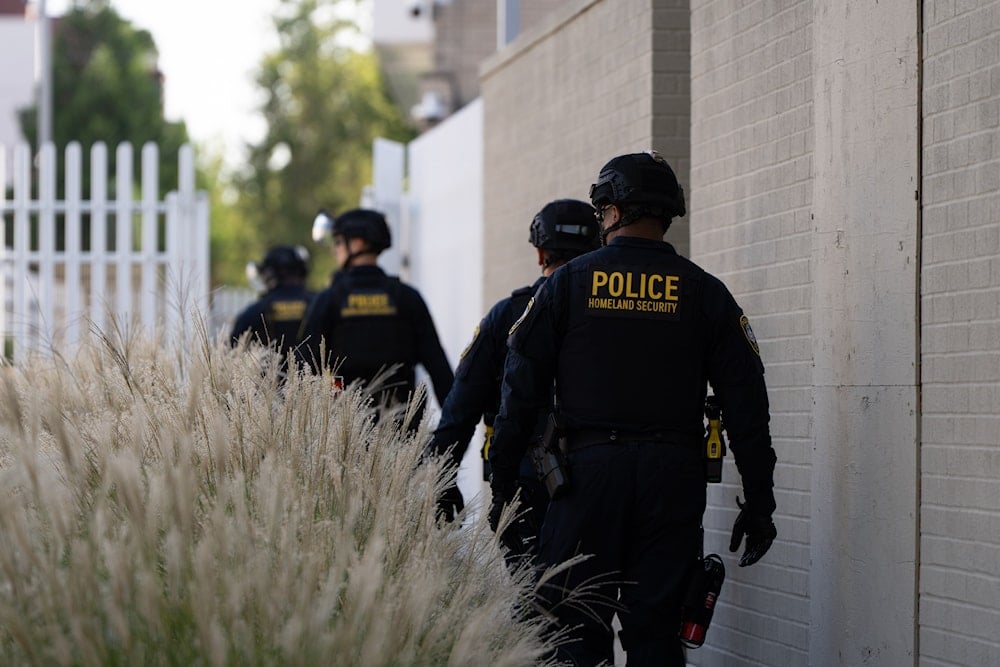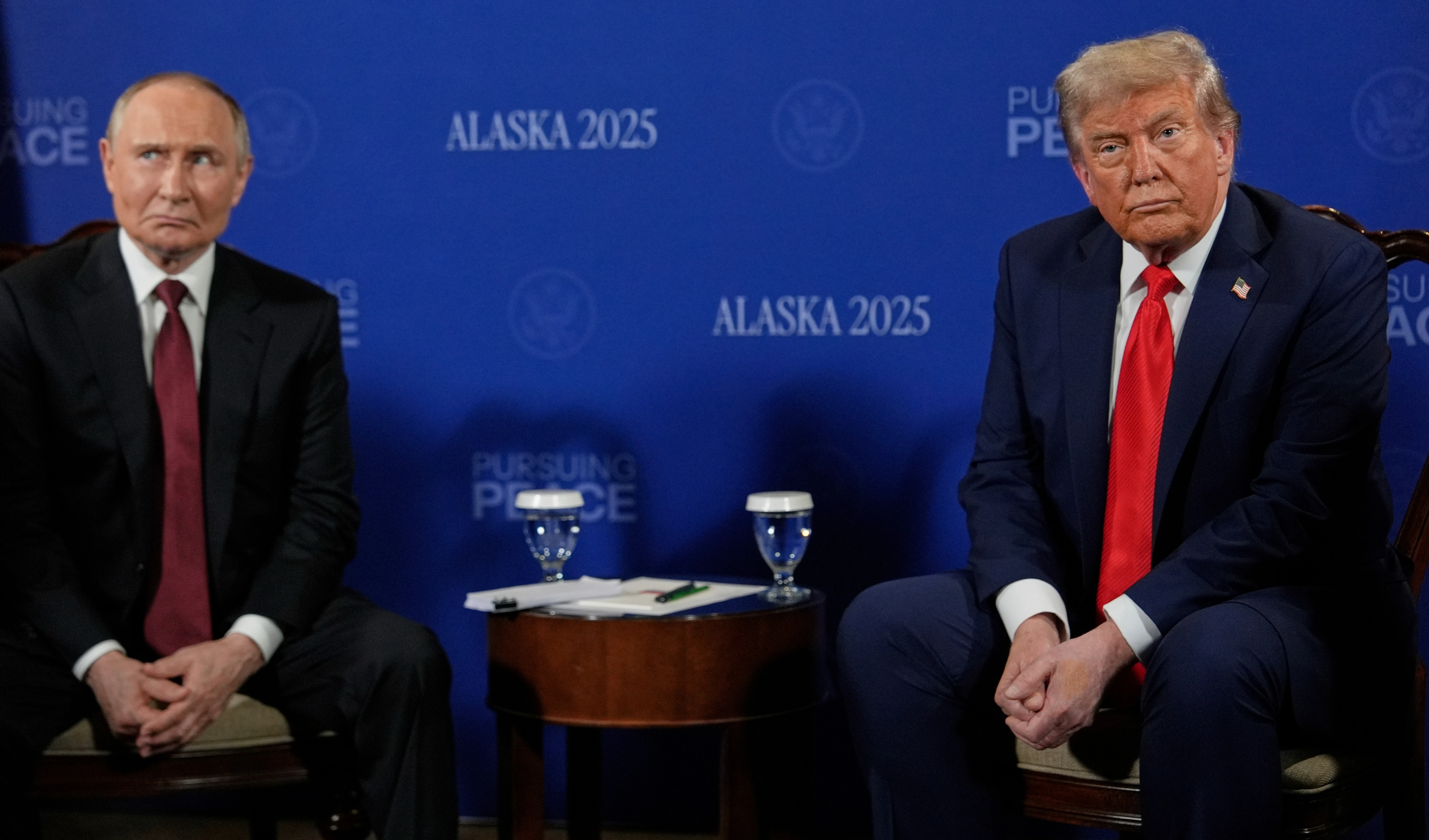Trump administration overhauls ICE, reassigns top officials
The Trump administration is reassigning top ICE officials nationwide in a major leadership shake-up, integrating Border Patrol into immigration enforcement amid growing concerns over aggressive tactics in major US cities.
-

Department of Homeland Security officials walk to the gates of the U.S. Immigration and Customs Enforcement facility after inspecting an area outside on September 28, 2025, in Portland, Ore. (AP Photo/Jenny Kane)
The Trump administration has launched a sweeping overhaul of Immigration and Customs Enforcement (ICE) leadership, reassigning at least half of the agency’s top field office directors. This ICE leadership shake-up reflects the administration’s efforts to strengthen and expand its hardline immigration enforcement agenda across the United States.
According to one current and one former US government official, the Department of Homeland Security (DHS) initiated the reassignments, which affect 12 ICE field office directors responsible for immigration enforcement nationwide. The officials, who spoke on condition of anonymity, said the shake-up is aimed at reinforcing the administration’s approach to mass deportations.
Of the 12 reassigned positions, half are to be filled by personnel from Customs and Border Protection (CBP), either current or retired, while the other half will be filled by existing ICE officers. An additional four field office leaders are being replaced due to retirements or other circumstances, affecting major immigration enforcement hubs such as Chicago, Los Angeles, and Washington.
While the specific reasons behind the personnel changes remain unclear, officials say the move represents a broader integration of Border Patrol agents into the ICE leadership structure, and the changes have reportedly been under discussion for some time among Trump administration officials as part of a comprehensive review of the agency.
Increased role of Border Patrol in urban immigration enforcement
CBP officers, especially Border Patrol agents, have increasingly been at the forefront of aggressive immigration enforcement tactics in urban areas. In Chicago, for example, agents recently conducted a dramatic operation that involved rappelling from helicopters onto residential buildings. They have also engaged in street-level patrols and high-speed chases through the downtown area.
The expansion of Border Patrol operations in cities like Chicago and Los Angeles marks a significant shift in their traditional roles, which primarily involve securing land and maritime borders against human trafficking and drug smuggling. ICE, since its inception in 2003, has been tasked with interior immigration enforcement. However, under the Trump administration, Border Patrol agents have become increasingly involved in domestic immigration operations.
Gregory Bovino, a Border Patrol sector chief from California who oversees operations in both cities, has drawn criticism for his role in these high-profile tactics. Bovino is currently a defendant in a federal lawsuit concerning the alleged use of excessive force during protests in Chicago, including the use of tear gas canisters.
These developments have sparked concern among immigrant communities and civil rights advocates, who warn that the escalation of force and presence of militarized officers only serves to heighten fear and tension.
Previous ICE leadership changes under Trump
This is the third significant leadership transition at ICE since Trump took office. In February, DHS reassigned acting ICE Director Caleb Vitello, appointing veteran ICE agent Todd Lyons as the new acting head. Lyons continues to serve in that role.
In May, ICE also reassigned the heads of its two main branches, signaling the administration’s ongoing effort to realign the agency with its immigration priorities.
A spokesperson for DHS, Tricia McLaughlin, declined to comment on the latest reassignments but emphasized the department’s results-driven mission. “This is one team, one fight,” she said. “President (Donald) Trump has a brilliant, tenacious team led by Secretary (Kristi) Noem to deliver on the American people’s mandate to remove criminal illegal aliens from this country.”
White House Spokesperson Abigail Jackson echoed the sentiment, stating, “The President’s entire team is working in lockstep to implement the President’s policy agenda, and the tremendous results from securing the border to deporting criminal illegal aliens speak for themselves.”
As the Trump administration continues to centralize and militarize immigration enforcement through personnel shifts and agency integration, the impact is being felt in cities across the country, particularly in immigrant communities facing rising fear and uncertainty.
What does this mean?
The Trump administration’s overhaul of ICE leadership represents a deliberate effort to centralize and militarize US immigration enforcement by merging ICE’s internal operations with Border Patrol’s more tactical, paramilitary culture.
By replacing half of ICE’s top field directors with CBP officers, the administration is effectively unifying border and interior operations under a single enforcement doctrine focused on mass deportations and visible displays of state power. This restructuring consolidates political control, ensuring loyalty to the president’s hardline immigration agenda, while extending aggressive enforcement tactics into major US cities.

 4 Min Read
4 Min Read










